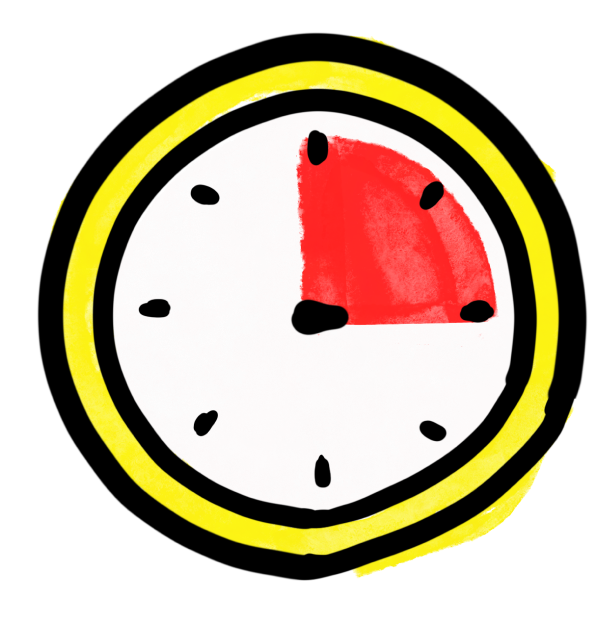Energy is a key component in facilitation. Making sure your participants are engaged and switched on ensures they can bring their A-game to the workshop!
You can have the best car in the world, but without fuel, you won’t get very far - Mehdi
“Omg, did he just quote himself”
Yes I did 😎
No matter how ambitious your workshop goals are, neglecting participant energy can be counterproductive. That’s why your role as a facilitator is to keep participants energized so that they can deliver what you expect from them.
Let me share my 8 tips for keeping their energy levels up.
#1 : Workshop, take a break, repeat
Breaks are one of the most effective tactic for sustaining the energy of your participants. Try to take a solid 15-minute break at least every 90 minutes. In remote workshops, fatigue sets in faster, so consider breaks every 60 to 75 minutes. Feel free to adjust this guideline based on audience engagement, activity intensity, and participant energy levels.
If you’re behind schedule, you may consider skipping or shortening the break. But trust me, that's a decision you'll regret.
People need that breather to recharge.
#2 : Include icebreakers & energizers
Another best practice when it comes to energy management is to include icebreakers and energizers.
These activities inject a sense of fun and excitement, revitalize energy levels, stimulate creativity, and increase overall productivity.
Think of them as active breaks since they provide a pause from the workshop's main goals.
Personally, I'm a big fan of high fives for this purpose: they create a great vibe. I understand it might feel a bit awkward at first, but trust me, it works wonders. Give it a try and dive in!
#3 : Encourage participants to move
Incorporate activities that involve physical movement. This can disrupt the rhythm of the workshop in a positive way and re-energize participants.
Participants need to move, so even simple actions like standing up, posting their stickies to the wall, and moving around the room can do the trick.
That’s why you want to use the space as much as possible and display your exercises on different walls. This will stimulate creativity and boosts energy levels. Additionally, you can also integrate small stretching activities.
This 60-second stretching is effective, but it's important to feel confident when using them with groups. I’ve tried it myself, but since it doesn’t align with my style, I choose not to integrate them into my sessions.
#4 : A well-structured agenda you will have
A clear structure not only helps participants understand the flow but also contributes to sustaining energy levels.
It's crucial to have the right sequence of activities in place. Research suggests that individuals can engage in challenging tasks for up to three hours, so it's essential to allocate them wisely.
For example, avoid placing a challenging exercise right at the start of the session or just after lunch. (The Design Sprint is a great example of how these workshops are designed with participants' energy levels in mind).
#5 : Varied short activities
I'm not a big fan of long, hardcore activities as they tend to drain too much energy from participants and carry the risk of investing too much time in one activity that may fail.
Instead, it's more effective to guide workshop participants through a series of small steps. Rather than diving into a complex exercise right from the start, we should lead them through a sequence of short, complementary exercises.
This approach enables them to gradually build towards achieving the session's goal while conserving energy in the room.
#6 : Put on music to pump participants up
Adding background music can really energize the group and enhance the work environment.
While I understand that music can sometimes be a distraction, its ability to boost energy makes it worth considering. If it affects people's focus, it's important to adapt to the situation in the room.
I once encountered a similar situation during a workshop where someone had difficulty concentrating due to the music. In response, I switched to some lofi music (no lyrics), and it helped while keeping the group energized.
#7 : Snacks & Drinks
Consider bringing snacks to your workshop: not only does it add a special touch to the experience, but it also fuels the group.
Whether you opt for healthy or not healthy treats is up to you.
Personally, I always have candy and chocolate with me, but let's be honest, healthier snacks like nuts or cereal bars work better for longer workshops.
PS: I always bring candy because they can be useful for chatty people in the room to prevent them from talking too much.
#8 : Break your own rules !
Embrace the idea of breaking your own rules.
While I've mentioned this before, it's crucial to read the room and adapt your workshop accordingly.
For example : as someone who's a big advocate for implementing the 'together alone' principle in my workshops (Collaborating silently while documenting your thoughts on sticky notes ), I understand its efficiency, but also recognize its potential to become tiring.
So, don't hesitate to be flexible and comfortable with breaking your rules. In such cases, opting for a group discussion (which you'll moderate and document) can be a refreshing change
Use these 8 tactics to keep your workshop participants energized !
By incorporating these 8 tactics into your workshop facilitation, you'll not only ensure an energized group throughout the entire session but also guarantee a more impactful and engaging experience for everyone involved.
Remember, as the facilitator, you set the tone for the workshop, so it's important to manage your own energy to maintain a positive and lively atmosphere.
















Thank you for sharing that insight about remote adaptation for breaks. I tend to do 45-60 minutes in a 2 hour workshop!